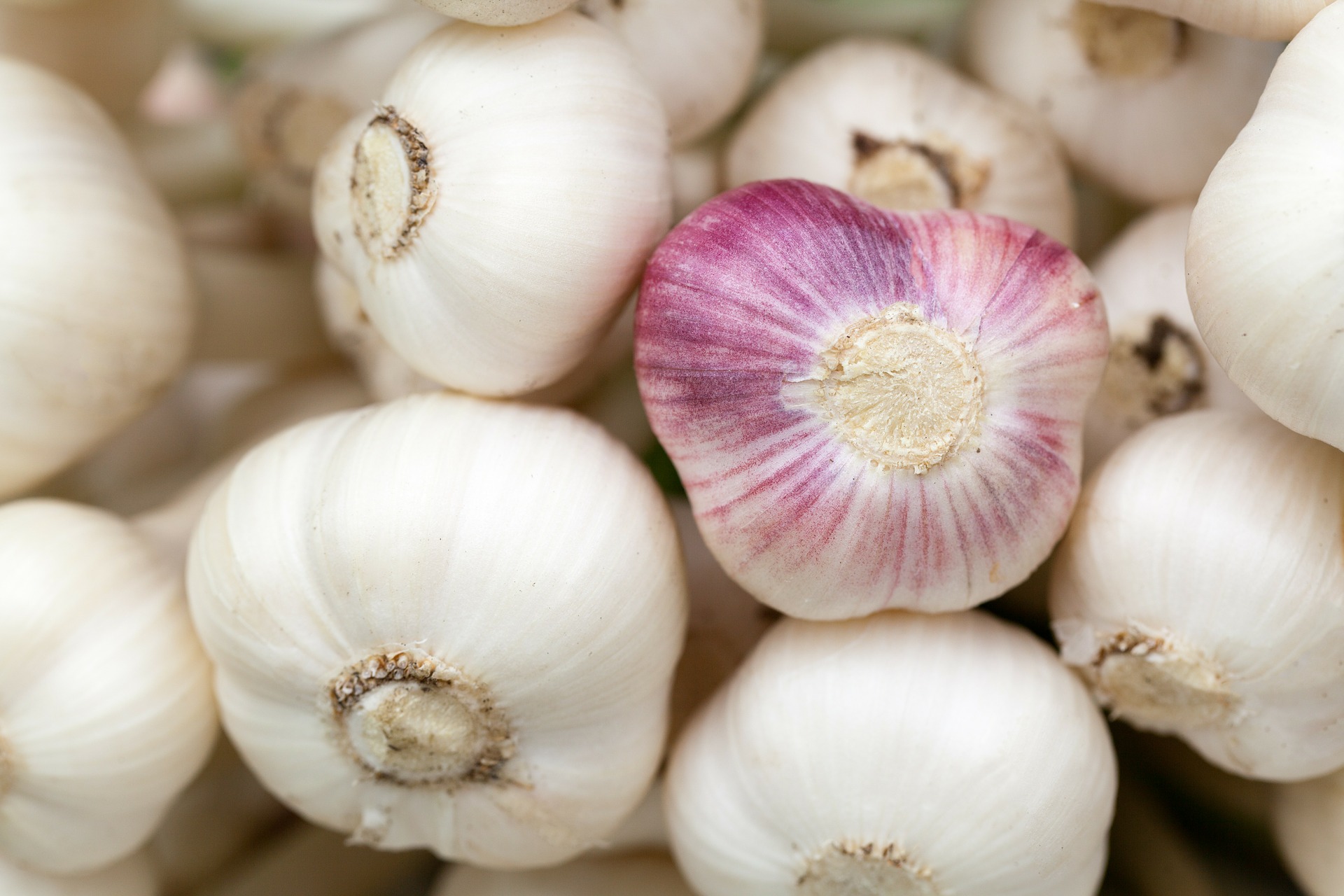As the summer comes to a close, so does our weekly All About Herbs session.
And our last herb is. . .garlic!
That’s right – garlic! It’s both a vegetable and an herb.
Garlic is in the same family as onions (and chives, and shallots, and leeks, and so on). Elephant garlic is more related to leeks.
Origin:
Because garlic has been around for so long, its exact debut is difficult to pin down. According to The Spice and Herb Bible, “there is a firm belief that it was grown in India, China, and Egypt before recorded history.”
It’s one of the oldest cultivated plants.
Growing garlic:
- Likes a deep planting bed or pot.
- Prefers full sun.
- Enjoys well-drained, light soil.
- Is vulnerable to weeds.
Drying garlic:
Dried garlic presents a flavor surprisingly similar to fresh, and it can keep for a long time. The bulbs can hang from their stems in bunches, as with drying other herbs.
Garlic powder can be made by grinding dried, sliced garlic. Or, a paste can be created and spray-dried until it forms a dissolvable powder, similar to the way coffee is made.
Freezing garlic:
Garlic can be frozen chopped up and placed in Ziploc bags, frozen unpeeled, or frozen pureed in oil.
Food garlic compliments:
This herb is used in so many foods! It’s one of those ingredients that can be difficult to work around when someone is allergic. Because it just makes food taste so good.
Obviously, it’s rather pungent, and sometimes less is more, because it doesn’t necessarily need to take over a dish. (Sometimes this is not the case. Sometimes lots and lots of garlic is perfect.)
Garlic is found in many cuisines, including Mediterranean, Indian, Asian, Mexican, Chinese, and Italian.
It goes well with. . .
- Pizza
- Pasta sauces
- Breads and butters
- Chicken and other meats
- Seafood
- Soups and stews
- Vegetables such as asparagus, tomatoes, broccoli, zucchini, green beans, potatoes
It basically compliments everything but fruits, sweets, and beverages.
